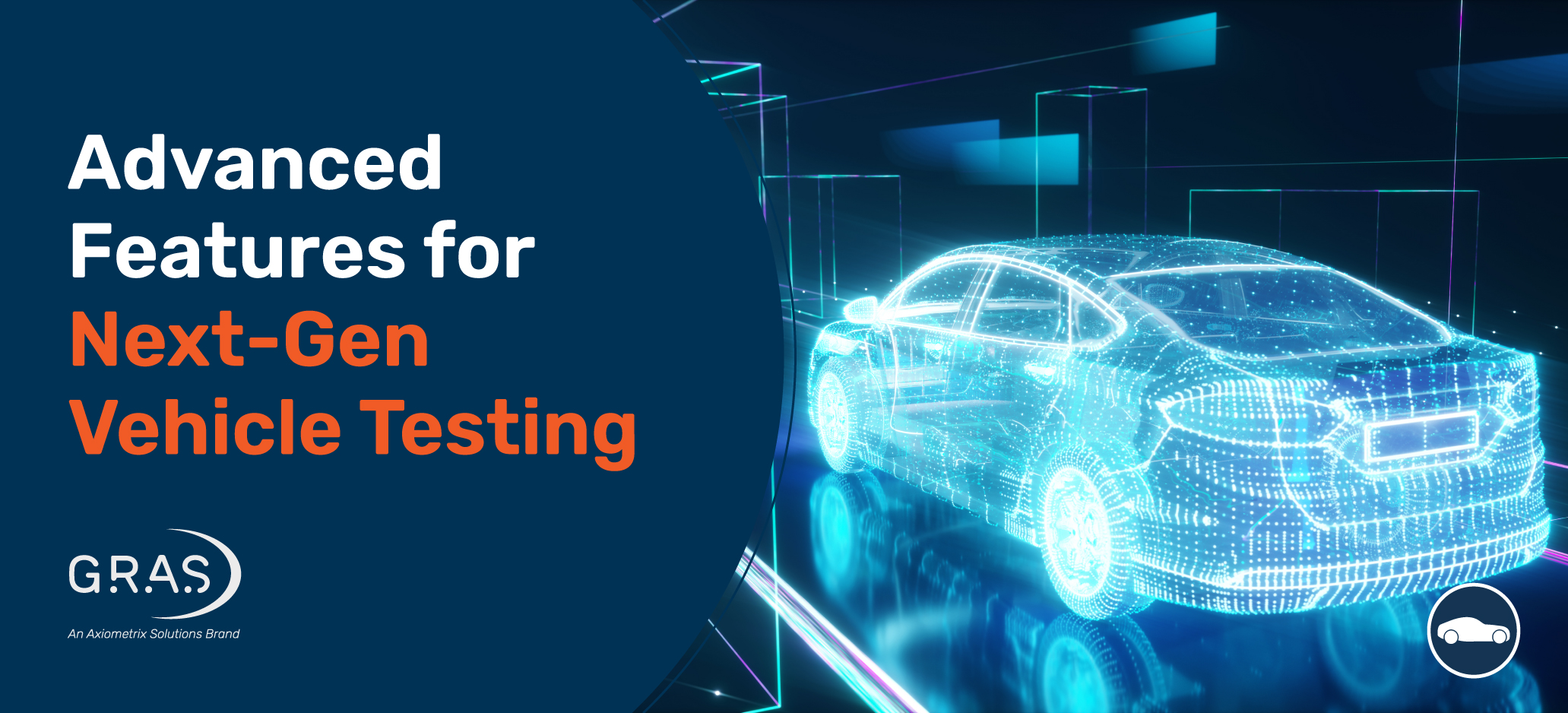Evolving tools and techniques in response to electrification and modern testing demands
In the dynamic world of automotive engineering, acoustic testing is rapidly evolving—especially with the shift toward electric vehicles (EVs). As noise sources change and test environments become more complex, the demand for precision, durability, and smarter tools is reshaping the field. In this two-part series, we explore the latest developments in automotive acoustic measurement technology.
The Shift Toward 1/4” Microphones
Traditionally, 1/2" microphones have been widely used in automotive testing. However, engineers are increasingly turning to 1/4" microphones due to their minimal impact on the sound field—an advantage in confined or complex environments. Multifield 1/4" models further enhance test result consistency under nonideal acoustic conditions. One historical challenge with 1/4" microphones has been their higher noise floor. Today, high-sensitivity variants address this issue, enabling reliable measurements even in quieter environments. For extremely low-level sound pressure levels (SPLs), however, an advanced solution is required. GRAS now offers the 46BC Multifield and 46BL-1 pressure microphone sets—both high-sensitivity 1/4" models—designed to deliver accurate results where low noise performance is critical.
Low-Noise Microphones for Quieter Vehicles
A low-noise microphone is a measurement microphone with a noise floor below approximately 15 dBA. These microphones have become increasingly important in automotive testing with the rise of electric vehicles (EVs), which lack the masking effect of a combustion engine. As a result, previously negligible noise sources—such as wind, road noise, electric motor whine, and inverter noise—are now more perceptible. Many of these sounds occur at frequencies where the human ear is especially sensitive, making accurate measurement essential.
GRAS addresses this need with solutions like the 47HC CCP low-noise microphone set, among others designed specifically for low-SPL measurements. Figure 1 illustrates the performance difference between a low-noise microphone and a standard measurement microphone in inverter noise characterization.
Figure 1: Measuring inverter tonal noise in an Electric Vehicle (EV).
Rugged Microphones for Harsh Testing Conditions
In automotive testing, microphones are often used on roads or test tracks, in temperature chambers, or close to heat sources. Most measurement microphones were not designed for such harsh treatment. To counter this, tougher measurement microphones with IP67 ratings (dust and water protection), and extended temperature ranges from -40°C and up to 125°C (-40°F to 257°F) have been introduced. Some microphones also have shock-absorbing designs to further protect them. Examples include the GRAS 146AE, a tougher general-purpose 1/2” free-field microphone (Figure 2); the 147AX, a 1/2” surface-mounted pressure microphone with a compact design and magnetic mounting system (Figure 3); and the 147EB with three layers of protection, typically used for on-road brake noise testing and other extremely demanding environments (Figure 4).
Figure 2: (a) GRAS’ 146AE 1/2” free-field ruggedized microphone. (b) GRAS 146AE’s special protection grid with multiple layers of protection.
Figure 3: GRAS’ 147AX ruggedized surface-mounted pressure microphone with magnetic mounting system
Figure 4: (a) GRAS’ 147EB ultra-ruggedized microphone with three layers of protection. (b) GRAS’ 147EB mounted in a car’s wheelhouse for on-road brake noise testing.
Want to explore these technologies further? Visit our page on Acoustic Sensors for Premium Data to learn how GRAS solutions help engineers capture better data in even the toughest environments.








